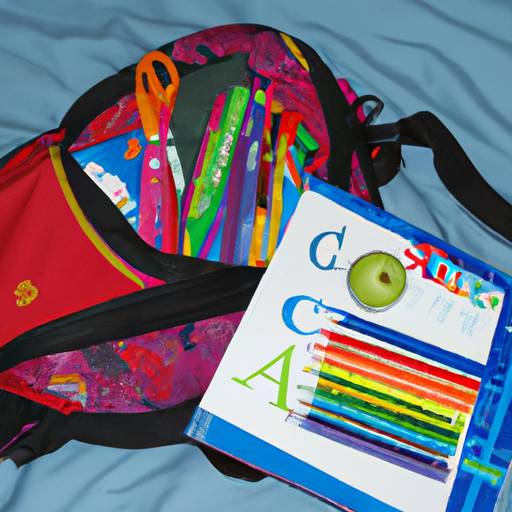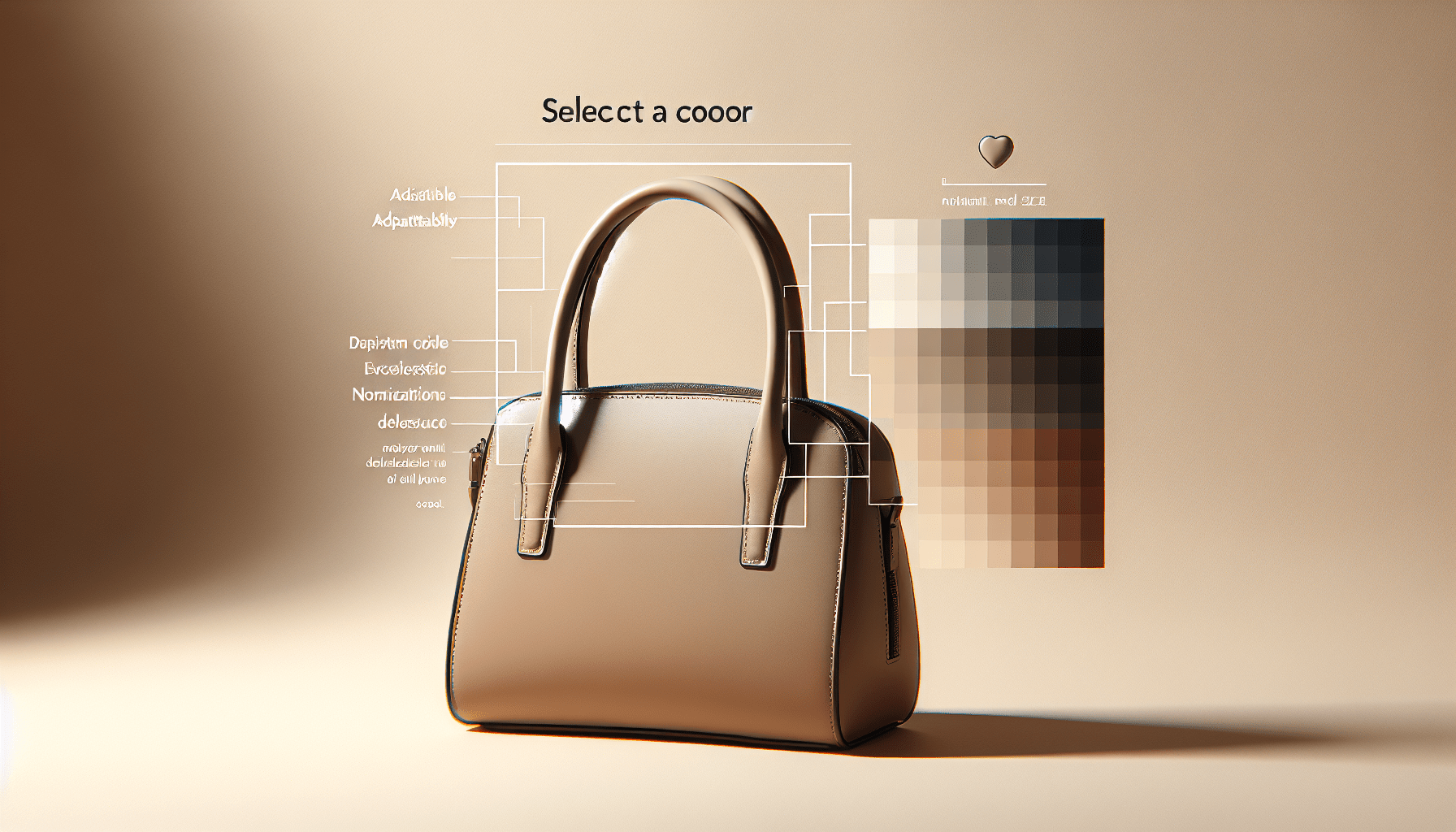What Size Backpack For Kindergarten
Choosing the right backpack for your child’s kindergarten journey can be an exciting yet crucial decision. It’s important to find a size that not only fits their tiny frames but also accommodates all their essentials. In this article, we will explore the factors to consider when selecting the perfect backpack size for your little one, ensuring they start their educational adventure on the right foot.
Choosing the Right Size Backpack for Kindergarten
Importance of a Properly Sized Backpack
When it comes to preparing your child for kindergarten, choosing the right size backpack may not be the first thing on your mind. However, it is an important decision that can greatly impact your child’s comfort, safety, and overall well-being. A properly sized backpack is crucial in ensuring that your child’s growing body is not strained or injured, and that they are able to carry their belongings without difficulty.
Considerations for Backpack Size
When determining the size of the backpack for your kindergartener, there are a few key considerations to keep in mind. First and foremost is the child’s torso length. Every child is unique and their torso length can vary, so it’s important to measure your child accurately before making a purchase. Additionally, considering the weight guidelines for kindergarten backpacks is essential to prevent your child from carrying excessive weight that could potentially cause harm.
Measuring the Child’s Torso Length
To measure your child’s torso length, have them stand up straight against a wall. Using a tape measure, measure from the base of their neck to the top of their hip bone. This measurement will give you a good estimate of the appropriate backpack size for your child. It’s important to remember that this measurement may vary slightly between different backpack brands, so it’s always a good idea to try on the backpack and adjust the straps accordingly.
Weight Guidelines for Kindergarten Backpacks
While it’s important to choose a backpack that is the right size for your kindergartener, it’s equally important to consider the weight that they will be carrying. The American Academy of Pediatrics recommends that a child’s backpack weigh no more than 10-20% of their body weight. This means that if your child weighs 50 pounds, their backpack should ideally weigh between 5-10 pounds. Keeping the backpack weight within these guidelines will help prevent strain on your child’s developing muscles and joints.
Backpack Size Options
When it comes to choosing the right size backpack for your kindergartener, you’ll find a variety of options available. Here are some common backpack sizes to consider:
Mini Backpacks
Mini backpacks are the smallest option available and are generally designed for toddlers and preschoolers. While they may be adorable, they may not provide enough space for all the items your kindergartener will need on a daily basis. However, if your child has a small torso length or only needs to carry a few essentials, a mini backpack could be a suitable choice.
Small Backpacks
Small backpacks are slightly larger than mini backpacks and are often suitable for kindergarten-age children. They provide enough space for a lunchbox, a change of clothes, and a few small items. Small backpacks are a popular choice for parents who want their child to carry their own belongings, while still keeping the weight manageable.
Medium-Sized Backpacks
Medium-sized backpacks offer more space than small backpacks and are a great option for kindergarteners who need to carry larger items, such as notebooks or folders. These backpacks typically have multiple compartments to help with organization, and their size allows for a comfortable fit on most children.
Large Backpacks
Large backpacks are the biggest option available and are often chosen by parents who want their child to have plenty of space for all their belongings. While they may be tempting, it’s important to remember that larger backpacks can lead to a higher likelihood of overpacking and carrying excessive weight. It’s important to find a balance between size and weight to ensure your child’s safety and comfort.
Features to Look for
When choosing a backpack for your kindergartener, there are several important features to look for. These features can greatly enhance your child’s comfort, organization, and overall backpack-wearing experience.
Adjustable Shoulder Straps
Look for backpacks with adjustable shoulder straps to ensure a proper fit for your child’s growing body. The straps should be padded to provide comfort and distribute the weight evenly across the shoulders. Adjusting the straps to the appropriate length will prevent the backpack from sagging too low or riding up too high.
Chest or Waist Straps
Some backpacks come with additional chest or waist straps, which can provide extra support and stability. These straps can help distribute the weight more evenly and prevent the backpack from shifting or bouncing while your child is walking or running.
Padded Back Support
Consider backpacks with padded back support, as this can greatly increase your child’s comfort and protect their back from the pressure of heavy books or other items. The padding should be firm enough to provide support, but not so thick that it affects the fit of the backpack.
Multiple Compartments
Choosing a backpack with multiple compartments can be beneficial for organization. Look for backpacks that have separate sections for items like lunchboxes, water bottles, and school supplies. This will help your child keep their belongings organized and easily accessible throughout the school day.
Water Bottle Holder
Hydration is important for growing children. Look for backpacks that have a designated water bottle holder, ideally on the side of the backpack. This will make it easy for your child to stay hydrated throughout the day without having to dig through their backpack to find their water bottle.
Benefits of a Properly Sized Backpack
Choosing a properly sized backpack for your kindergartener can provide numerous benefits for their overall well-being and school experience.
Promotes Good Posture
A properly sized backpack encourages your child to maintain good posture while carrying their belongings. When the backpack is fitted correctly and the weight is distributed evenly, it helps align the spine and prevents slouching or leaning forward.
Prevents Back and Shoulder Pain
Carrying a backpack that is too heavy or ill-fitting can lead to back and shoulder pain in young children. By choosing the right size backpack and adhering to the weight guidelines, you can help prevent these issues and ensure your child remains comfortable throughout the school day.
Allows for Easy Organization
A properly sized backpack with multiple compartments allows for easy organization of your child’s school supplies. This promotes independence and helps them locate their items quickly and efficiently, reducing stress and frustration.
Encourages Independence
Giving your kindergartener a properly sized backpack that they can carry themselves promotes independence and fosters a sense of responsibility. It allows them to take ownership of their belongings and take pride in carrying their own backpack like the “big kids.”
Safety Concerns
When it comes to backpack safety, there are several important factors to consider to ensure your child’s well-being.
Avoiding Excessive Weight
Carrying a backpack that is too heavy can put unnecessary strain on your child’s muscles and joints. Help them pack only the essential items they need for the day and avoid overpacking. Encourage them to leave unnecessary items at home or in their cubby at school.
Ensuring Proper Weight Distribution
Teach your child to distribute the weight evenly in their backpack. Heavier items should be placed closest to their back, while lighter items can be stored in the outer compartments. This helps prevent the backpack from pulling them backward or shifting their center of gravity.
Avoiding Tripping Hazards
Ensure that the backpack is not too long or too bulky, as this can increase the risk of tripping. The bottom of the backpack should not extend past your child’s lower back. Adjust the straps accordingly to achieve a proper fit.
Optimizing Visibility
Choose a backpack that has reflective materials or bright colors to enhance your child’s visibility, especially when walking to and from school. This can help drivers spot your child, particularly in low-light conditions.
Backpack Material and Durability
When selecting a backpack for your kindergartener, it’s important to consider the material and durability to ensure it can withstand daily use and last throughout the school year.
Choosing Sturdy Materials
Look for backpacks made from durable materials, such as nylon or polyester, that can withstand the wear and tear of daily use. These materials are often resistant to tears and rips, ensuring that the backpack remains intact even with frequent use.
Waterproof or Water-Resistant Options
Considering the unpredictable weather conditions, choosing a waterproof or water-resistant backpack can protect your child’s belongings from getting wet. This is particularly important if your child walks to school or if their backpack will be exposed to rain or snow.
Inspecting Stitching and Zippers
Before making a purchase, inspect the backpack’s stitching and zippers. Ensure that the stitching is secure and the zippers move smoothly. Loose stitching or faulty zippers can lead to tears or breakage, making the backpack less durable and potentially compromising the safety of your child’s belongings.
Reinforced Bottom
A reinforced or padded bottom is an added bonus when selecting a backpack for your kindergartener. This feature adds extra durability and protects the bag from wear and tear when placed on the ground.
Tips for Packing a Kindergarten Backpack
Even with the right size backpack, proper packing techniques can further enhance your child’s comfort and safety.
Packing Only Essential Items
Encourage your child to pack only the essentials for school. Help them determine what they truly need for the day and leave unnecessary items at home.
Prioritizing Lightweight Materials
Whenever possible, choose lightweight materials for school supplies to avoid adding unnecessary weight to the backpack. For example, opt for notebooks and folders made from lighter materials rather than heavier options.
Utilizing Compartments for Organization
Teach your child how to use the compartments in their backpack effectively. Designate specific sections for different items, such as a lunchbox compartment or a separate area for school supplies. This will help your child stay organized and quickly find what they need throughout the day.
Checking the Child’s Backpack Regularly
Make it a habit to check your child’s backpack regularly to ensure they are not carrying unnecessary items or excessive weight. This will help them establish good habits from an early age and prevent strain or discomfort.
Involving the Child in Decision-Making
Involving your child in the decision-making process of choosing a backpack can empower them and teach them about responsibility and ownership.
Letting the Child Choose the Design
Allow your child to choose a backpack that reflects their personal style and interests. By involving them in the decision-making process, they will feel a sense of ownership and pride in their backpack.
Teaching the Child about Proper Backpack Usage
Take the time to explain to your child how to properly wear and use their backpack. Teach them how to adjust the straps, distribute weight evenly, and pack their backpack in an organized manner. This will ensure they understand the importance of taking care of their belongings and using their backpack in a safe manner.
Incorporating Responsibility and Ownership
Encourage your child to take responsibility for their backpack by reminding them to keep it clean, not to leave it lying around, and to take care of any repairs that may be needed. This will instill a sense of responsibility and ownership in your child, fostering independence and self-sufficiency.
Other Considerations
In addition to the size and features of the backpack, there are a few other factors to consider when making your decision.
School Requirements and Restrictions
Some schools may have specific requirements or restrictions when it comes to backpacks. Be sure to check with your child’s school to ensure that the chosen backpack meets any regulations or guidelines they may have.
Potential Growth and Future Usability
Considering your child’s growth and potential future use of the backpack is important, especially if you plan for the backpack to last beyond kindergarten. Choosing a backpack that has a bit of room for growth can save you from having to purchase a new one too soon.
Budget and Affordability
While it’s important to provide your child with a high-quality backpack, it’s also essential to consider your budget and affordability. Set a budget before shopping and look for options that fit within your price range while still meeting your child’s needs.
Conclusion
Choosing the right size backpack for your kindergartener is a decision that should not be taken lightly. Taking into consideration their torso length, weight guidelines, and the features that are important to you and your child, will help ensure that the backpack is safe, comfortable, and conducive to their overall school experience. By prioritizing your child’s comfort, safety, and organization, you can set them up for success as they start their educational journey in kindergarten.




